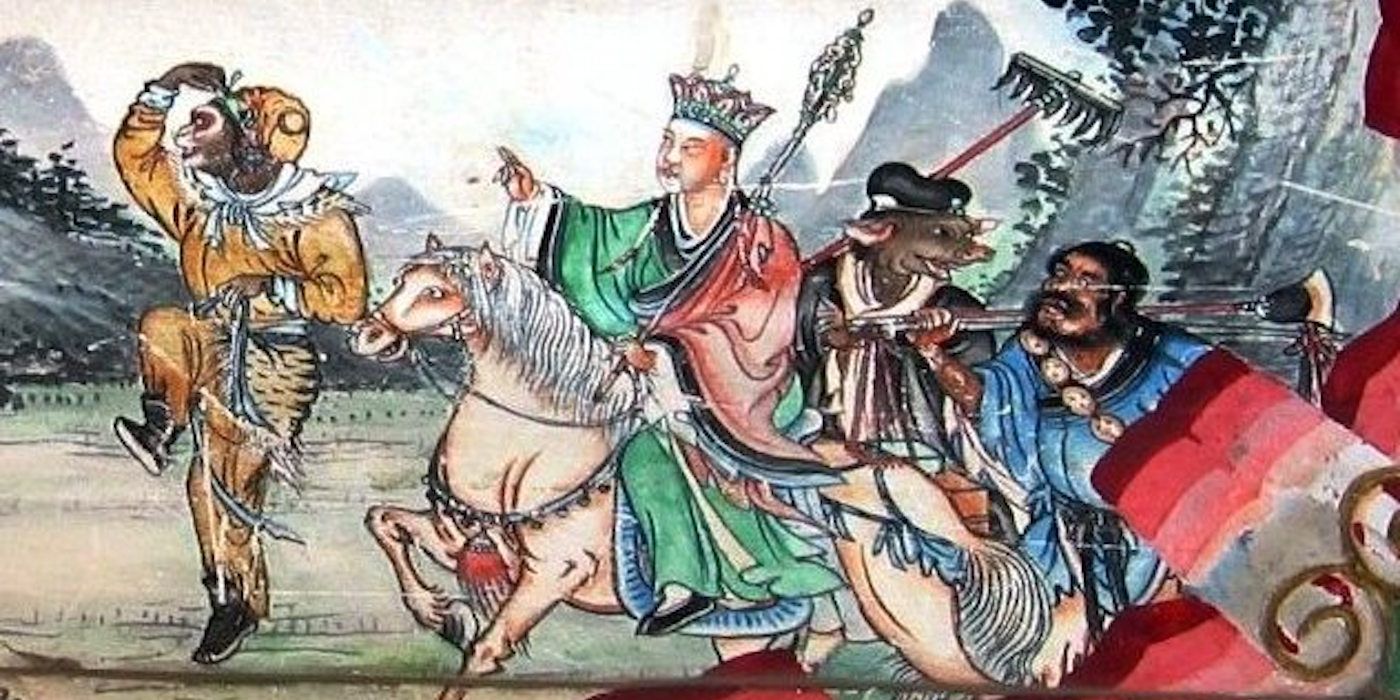Dragon Ball is one of the most influential franchises of the past 40 years, with numerous successful sequels and spinoffs across a range of different media — but the original manga’s inspiration lies in a very old story that’s even more influential. When Akira Toriyama created Dragon Ball in the early eighties, he adapted one of history’s most significant literary works – a 16th century Chinese novel called Journey to the West.
Before it became a popular anime series in America, and long before the hit sequel Dragon Ball Z, Dragon Ball was a manga, written and illustrated by Akira Toriyama. The original run, which was later adapted into the first anime series (with a few changes), follows a young Son Goku on a quest to find the seven magic Dragon Balls, accompanied by the human girl Bulma and shapeshifting pig Oolong. The early stories center on this core group getting in and out of various dangerous situations, and facing off against an eclectic cast of demons, bandits, and other foes.
Much of this original story, including many aspects of Goku himself, pulls directly from Journey to the West, a 16th century fictionalization of a 7th century travel log by Buddhist Monk Xuanzang. Journey to the West, which melds Xuanzang’s historical travel westwards towards India with elements of Chinese myth and folklore, is attributed to the writer Wu Cheng'en. Like Dragon Ball, Journey to the West a travelling adventure, with a core cast of characters getting in and out of trouble with demons and enemies in search for some spiritually significant items. But the similarities don’t stop there.
Most notably, Goku himself is directly based on one of the main characters of Journey to the West, Sun Wukong. Sun Wukong is a monkey who, through various spiritual and physical trainings, becomes strong enough to challenge Heaven itself, which he does. For his hubris, he is trapped under a mountain, eventually released with the task of aiding the monk Tang Sanzang on his journey. Like Wukong, Goku is a fearsome fighter with superhuman abilities, a monkey’s tail (which Goku often loses), a magical staff that he uses as a weapon, and a cloud that he rides on. And like Wukong, Goku can be a bit cocky at times. Even their names, Son Goku and Sun Wukon, are practically the same, as both Goku and Wukong mean “awakened to emptiness” in Japanese and Chinese respectively. There are a number of other Dragon Ball characters with clear Journey to the West counterparts, like Oolong (the pig creature Zhu Bajie) and Yamcha (rival warrior Sha Wujing).
Journey to the West is an incredibly important piece of literary history, both for East Asia and the world at large. Beyond Dragon Ball, it has inspired a number of stories across different media, including the video game Enslaved: Odyssey to the West, and AMC’s post-apocalyptic kung fu show Into the Badlands. Both Enslaved and Badlands transpose elements of the classical tale onto a futuristic setting, with a number of characters who pull directly from Journey to the West (like Nick Frost’s Bajie in Badlands being a direct parallel to Zhu Bajie).
Dragon Ball strayed further from its roots in the later manga installments that became Dragon Ball Z — replacing many of the mythological elements with more sci-fi stylings — but Journey to the West has always remained a guiding foundation for the franchise. For fans, it’s fun to know that even lauded creatives like Akira Toriyama take inspiration from the greats of the past.


